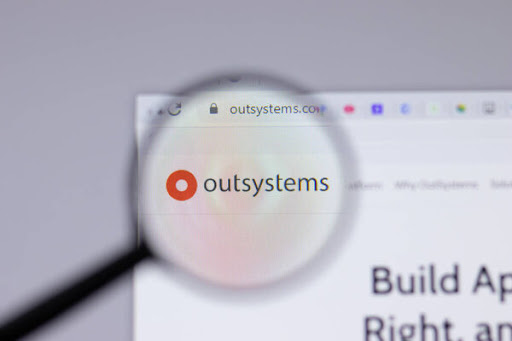The low-code development market has been on a very slow rise since its inception and launch a couple of decades ago. However, since the prominence and capability of traditional development, low code development did not rise to popularity as it does now. For once, there is a form of coding that cuts project completion time to half less than traditional development. For big corporations and small businesses alike, low-code becomes beneficial in managing time.
In Vailshery’s article, “In 2021, 29 percent of respondents from a global survey indicated that low-code development is between 40 and 60 percent faster than traditional development.” Each project is unique and will take different times to complete. The utilisation of low-code platforms has eased a lot of technical issues and concerns that translate into more expensive options, i.e., hiring a professional developer for projects.
The no-code development market is also gaining fast traction among developers. Typically, developers must spend hours and longer days typing away to create applications. Now, no-code development platforms take away that pain point from users. More platforms are rising recently, aiming to help users without technical coding knowledge create digital products efficiently.
By now, the terms “low code” and “no code” are thrown around interchangeably. Nevertheless, there is a clear distinction between these two forms of citizen software development. Before checking out new services or signing up for new coding platform subscriptions online, it’s best to differentiate the two.
Low code vs. No code development
Low code development is a type of software development that differs significantly from traditional coding. While traditional coding requires all technical knowledge for any certain programming language, low-code development doesn’t. Low-code development requires minimal coding proficiency.
Low-code employs a more visual interface of drag and drop, which automatically brings in the basic code logic of the elements. Users need only to create logical workflows and processes and drop respective elements in the platform space. Users only need to worry about the application interface instead of creating line codes that display the same output.
No code development is a lot like low-code development. Both citizen development options save time and money for the starter developer. Whereas low code requires minimal coding skills, especially for developers who want to apply minor tweaks to the interface, no-code requires no code at all.
No code development platforms are often literal drag and drop elements into the blank canvas. The backend portion of these elements is already set and not up to change from users. For beginners still exploring newer development trends, the existence of no-code platforms is one of the biggest opportunities and gateways to software development.
Here are some examples of both types of citizen development platforms. Note that each platform has unique features, strengths, and focus areas. More often than not, the best way to deal with the
Examples of low-code platforms
With the rise of low-code platforms, first-time creators and developers have many options. Here are some of the low code tools available for trial and subscription:
Retool
One of the most popular tools in the market is Retool, as evidenced in a survey that states, “In 2021, 70 percent of respondents from a global survey indicate using Retool as low/no-code platform for internal apps” (Vailshery, 2022). Retool offers a lot of functions and features on its platform. The elements that users need to drag and drop in the canvas come in the form of blocks that encompass specific functions.
Block Functions
Users can add around 90 different function blocks to a workflow. Some function blocks are more complex than the others but provide higher function and work integration to the project. Here are some examples of blocks that users typically drag:
- Table block produces a predesigned table that users can change once set into the blank space.
- Form block allows users to drag a form interface with the most basic entry inputs such as username and password.
- Chart block automatically generates a chart with the given highlighted or preselected data.
All blocks have a wide range of modifications. Users can change the design, add more input forms, arrange table views and select simple graphs on the blank canvas.
Database integrations
Users may also connect and employ the function of another existing application to Retool. All permissible applications are present in the Database Integrations tab of the platform.
Free subscription
All beginners should explore Retool as this platform provides a Free account subscription for trial. The platform is relatively easy to use and there are many ways to modify each element block in the canvas. It’s perfect for people learning the ropes of low-code development.
Creatio
Creatio specialises in providing high levels of workflow automation for various organisation sizes. Creating automated systems using a low-code platform like Creatio may be the gateway for businesses who want to get things done.
System designer
Creatio has a lot of templates, connectors, add-ons and other software solutions in its platform. For many developers, the beginning of development, even low-code or no-code development, can be very intimidating. The presence of premade sets and functions helps solve that problem.
- Templates cater to the elements of the visual canvas. These elements in the templates are customisable according to business needs. For example, there are templates for industries such as Business Services, Finance, and Healthcare. These templates are preset with elements that reflect the industry requirements.
- Connectors and add-ons serve as a pathway toward external applications connected to Creatio. These external applications allow users to integrate existing systems and interfaces to a new creation platform.
- Software solutions focus on high-standard programs common or necessary in specific industries. Users in Creatio have a wide range of external software solutions essential for particular business operations.
AI Integrations
Users are never limited to one complete system or workflow only. The AI integrations in Creatio help users run multiple projects on the platform. All projects and applications are subject to change influenced by analytics and data. AI helps the users apply necessary changes to shape up existing projects.
Free trial
Creatio offers a free 14-day trial to new users.
OutSystems

OutSystems is a low-code platform that has provided development subscriptions to some of the biggest names in certain industries. OutSystems partners with big names such as Accenture, Deloitte, and KPMG for low-code development. These large companies aren’t the only ones benefiting from the low-code opportunities that OutSystems offers. Here are some of the things that users will find in the OutSystems platform:
Low-code with AI
One of the most prominent aspects of any project is scalability. The deployment and initial days or months of using any low-code product are just the beginning. What happens when it’s crucial to add more functions and features? Any changes should be backed up by large data that provide evidence of beneficial change.
OutSystems Low code development with the integration of Artificial Intelligence provides that function for businesses. The AI-infused in OutSystems ensures that businesses stay ahead of the game and get the necessary updates and insights about the current performance of the product.
External Integrations
External applications provide as much success to the platform as the services it offers. Low-code development, at its core, becomes a network of processes and workflows eased in to make business operations easier. OutSystems connects to around 400 systems not part of the platform to provide higher integration and access to users.
Free user account
OutSystems provides a free trial account for new users. There are custom and set prices for extensive enterprise access and use to the OutSystems platform.
Examples of no-code platforms
There is a significant preference for no-code platforms as more developers choose no-code platforms to create business systems. No-code platforms don’t only provide benefits to users. Using no-code platforms also makes development an enjoyable process for many developers (Sava, 2022).
Webflow
Webflow is a San Francisco-based company that provides a no-code development platform online. Over 3.5 million users have used the platform to create websites without writing a single line of code. Webflow specialises in developing websites without coding, and the platform has relevant products matching website development.
E-commerce site
One of the biggest websites that dominate online spaces now is e-commerce sites. These are websites that are focused on selling products and services online. Many companies, especially retail businesses, use e-commerce sites to show what they can offer online. Most of the time, these sites are the backbone of small businesses that need to generate income through further online reach and engagement.
Webflow has an e-commerce product to help all businesses create stunning and efficient websites that sell. The product includes all portions of e-commerce, such as the display of goods, checkout pages, and “Add to Cart” pages. Users can access all of these functions without coding.
CMS and SEO
In line with e-commerce sites, many websites also need CMS and SEO capabilities. It’s different from having a specialised site to sell products as compared to sites that need to publish optimised content regularly. Though these two types differ, keeping the best CMS and SEO practices to rank higher on Google and build more organic reach is necessary.
CMS products serve as a collaboration ground for many users. Editors, content creators, web designers, and individuals from various departments can work simultaneously under the same CMS plan for the website.
Starter and basic plans
Webflow offers a free starter plan for people exploring no-code development. Higher plans have various costs, and the primary agenda encompassing Webflow functionalities is about 12 USD per month.
Airtable
Airtable is a no-code development platform that focuses on data management. The platform features many functions to handle data without any involvement in coding. Airtable is a popular platform offering different plans for each user account. This no-code platform is one of the most reliable data builders; Around 80% of Fortune 100 companies utilising Airtable to handle large data sets.
Interface Designer
Interface Designer is a new product of Airtable where users can create automated systems and workflows for data. Airtable provides a blank canvas for users to drag and drop elements. It’s also in this space where users can collaborate with other people to create flowcharts and procedures for data management.
Automation
For many businesses, automation saves time in performing business operations. Moreover, in the aspect of data, it takes time to handle large volumes of data sets. With Airflow, users can automatically create automated workflows to streamline many processes for the company. Take this as a benefit for enterprises to gain instant data processing with Airtable’s logic functions.
Free account and Plus account
Airtable provides a free account where new users can test the platform and services. The Plus account is Airtable’s next basic account which includes many other features, costing around 10 USD per user monthly.
Mailchimp

Mailchimp is one of the oldest no-code platforms that entered the twenty-first century. The platform began in 2001 and was created by Ben Chestnut, Mark Armstrong and dan Kurzuis. Unlike other platforms that focus on software development and data management systems, Mailchimp focuses on email marketing. Here are some of the most common products that users employ from Mailchimp:
Email Marketing
Many companies rely on email marketing to deliver and advertise what they can offer to their target audience. Email marketing is one of the biggest tools to market businesses. According to Dixon’s article, “In 2020, the number of global e-mail users amounted to four billion and is set to grow to 4.6 billion users in 2025.”
Email is still one of the essential tools of online communication, and the number of email users grows annually despite the introduction of more instant forms of communication. Mailchimp is one of the most reliable no-code platforms to communicate the presence of businesses through email.
Social Media Marketing
While email marketing is one of the oldest ways to market goods online, social media marketing is relatively new. The rise of social media paved the way to provide prominent companies with a method of pushing goods and services in online spaces.
Mailchimp provides no-code products to manage social media marketing elements of the business. Mailchimp provides functions for data analytics, automatic posting features and overall account management.
Free account and Essentials account
Mailchimp offers a free account for users who want to try the platform. Then the Essentials account costs 11 USD per month per user.
Conclusion: Low code vs. no code
Low code platforms allow users to change and modify code minimally. Developers with basic coding knowledge can use their knowledge to customise what they can create on the platform. On the other hand, no-code platforms don’t require or allow coding at all. Many no-code platforms specialise in product types allowing users to use focused, reliable systems.






